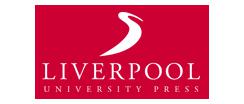- View more resources from this publisher
 Nuffield Foundation
Nuffield Foundation - View more resources from this publisher
 Liverpool University Press
Liverpool University Press
SPACE Project Research Report: Evaporation and Condensation
The Science Processes and Concepts Exploration (SPACE) project research report on Evaporation and Condensation was published in 1990 by Liverpool University Press. The SPACE research was conducted at two centres: at the University of Liverpool and King’s College, London, with Wynne Harlen and Paul Black as joint directors. Each centre took responsibility for research in particular concepts and for producing the report of the work. In the case of Evaporation and Condensation, one of the first reports to be published, the research was conducted from Liverpool and the authors were Terry Russell and Dorothy Watt.
The research took place between March and November 1987. To guide the research on the phenomena of evaporation and condensation, a list of related concepts was compiled. These ideas included, for example: that water can exist in three forms; that air contain invisible water vapour; that evaporation and condensation separate water from solids which are dissolved in it; that other liquids also evaporate and condense, and so on.
For the first phases of the research activities for primary school students (aged 5 to 11 years) related to these ideas were compiled. Primary school teachers taking part in the project involved their students in these activities prior to the phase in which their students' ideas were elicited using a range of techniques including individual interviews by the researchers. The next phase was intervention in which four main strategies were used to enable students to develop their ideas. This was followed by further interviews so that pre- and post-intervention ideas could be compared.
The research report provides a large number of representations of students' ideas, both pre- and post-intervention, mainly through the students' drawing and writing and transcripts of their oral explanations. Tables giving pre-and post-intervention results for particular activities are included. Results varied according to the focus of the activity and the researchers conclude that a range of activities is needed to contribute to the development of students' ideas.
Appendices provide full details of the activities, interview schedules, materials used in the activities and the classroom intervention strategies.
Contents
Introduction
Methodology
Pre-intervention elicitation work
Children’s ideas
Intervention
The effect of intervention - changes in children’s ideas
Summary
Bibliography
Appendices A1 – A19
Show health and safety information
Please be aware that resources have been published on the website in the form that they were originally supplied. This means that procedures reflect general practice and standards applicable at the time resources were produced and cannot be assumed to be acceptable today. Website users are fully responsible for ensuring that any activity, including practical work, which they carry out is in accordance with current regulations related to health and safety and that an appropriate risk assessment has been carried out.
Downloads
-
Evaporation and condensation 9.63 MB




